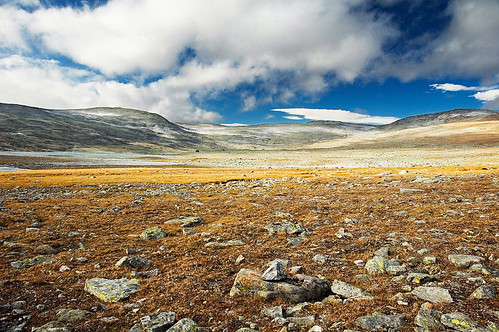The soil of the tundra has certain traits that make it very difficult for plants to thrive in.
 The little precipitation that falls in the tundra is often snow. The snow will then collect of the surface of the soil and when it melts the layer of permafrost beneath the soil will prevent it from being absorbed. This leaves the surface of the soil wet and soggy with little of the water evaporating because of the frigid air of the tundra.
The little precipitation that falls in the tundra is often snow. The snow will then collect of the surface of the soil and when it melts the layer of permafrost beneath the soil will prevent it from being absorbed. This leaves the surface of the soil wet and soggy with little of the water evaporating because of the frigid air of the tundra.The previously mentioned characteristics are generalized to fit both types of the tundra, though they do characterize the arctic tundra more so than the alpine tundra.
 The alpine tundra is made up of ever changing mountains formed either by volcanoes, the collisions of continental plates, or retreating glaciers and are altered by earthquakes, strong winds, mud slides, and avalanches. Because of these mountains, the active layer of soil in the alpine tundra is not as soggy as in the arctic as the water runs off the mountain sides.
The alpine tundra is made up of ever changing mountains formed either by volcanoes, the collisions of continental plates, or retreating glaciers and are altered by earthquakes, strong winds, mud slides, and avalanches. Because of these mountains, the active layer of soil in the alpine tundra is not as soggy as in the arctic as the water runs off the mountain sides.


